Approximate Solution of Tuberculosis Disease Population Dynamics Model
Abstract
We examine possible approximate solutions of both integer and noninteger systems of nonlinear differential equations describing tuberculosis disease population dynamics. The approximate solutions are obtained via the relatively new analytical technique, the homotopy decomposition method (HDM). The technique is described and illustrated with numerical example. The numerical simulations show that the approximate solutions are continuous functions of the noninteger-order derivative. The technique used for solving these problems is friendly, very easy, and less time consuming.
1. Introduction
Tuberculosis, MTB, or TB (short for tubercle bacillus) is a common and in many cases lethal, infectious disease caused by various strains of Mycobacterium, usually Mycobacterium Tuberculosis [1]. Tuberculosis typically attacks the lungs, but can also affect other parts of the body. It is spread through the air when people who have an active TB infection cough, sneeze, or otherwise transmit their saliva through the air [2]. Most infections are asymptomatic and latent, but about one in ten latent infections eventually progresses to active disease which, if left untreated, kills more than 50% of those so infected. Interested reader can find more about this model in [3–7].
The purpose of this paper is to derive approximate analytical solutions for the standard form as well as the fractional version of (1) together with (2) using the relatively new analytical technique, the homotopy decomposition method (HDM).
The paper is structured as follows. In Section 2, we present the basic ideal of the homotopy decomposition method for solving partial differential equations. We present the application of the HDM for system Tuberculosis disease population dynamics model in Section 3. In Section 4, we present the application of the HDM for system of fractional Tuberculosis disease population dynamics model. The conclusions are then given finally in Section 5.
2. Fundamental Information about Homotopy Decomposition Method
3. Application of the HDM to the Model with Integer-Order Derivative
In this section, we employ this method for deriving the set of the mathematical equations describing the tuberculosis disease population dynamics model.
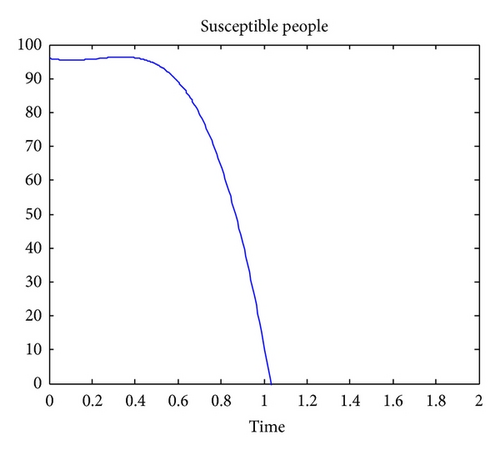
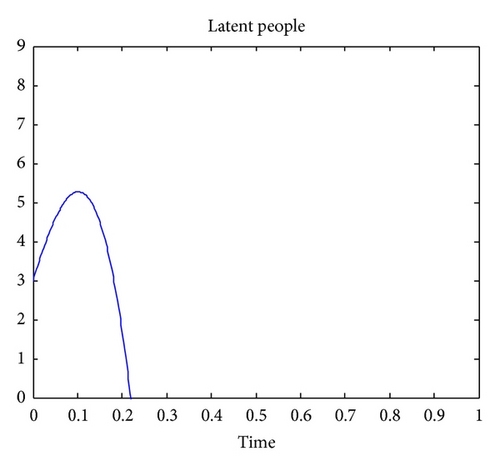
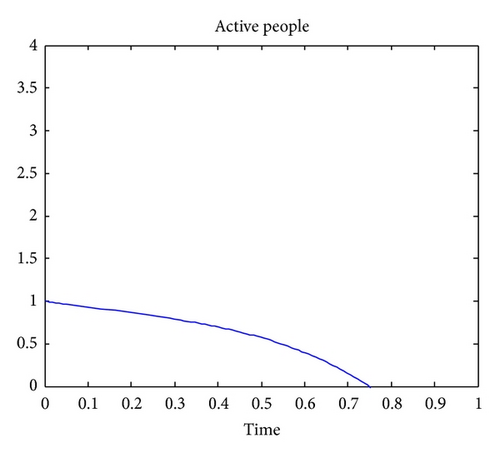
Figure 1 shows that, if there is migration or newborn in the location of interest, the number of susceptible people will vanish as time goes, because of the natural death rate and due to TB. Note that any person that is latently infected is removed from the set of susceptible. Figure 2 indicates that the number of people that are latently infected will increase up to a certain time and then vanish as time goes. The number of susceptible people, will become latently infected since some are not vaccinated against the TB and finally will vanish due to. Figure 3 indicates that the number of TB actively infected people will also vanish because of the natural death rate and the death due to TB.
4. Application of the HDM to the Model with Noninteger-Order Derivative
Fractional calculus has been used to model physical and engineering processes, which are found to be best described by fractional differential equations. It is worth noting that the standard mathematical models of integer-order derivatives, including nonlinear models, do not work adequately in many cases. In the recent years, fractional calculus has played a very important role in various fields such as mechanics, electricity, chemistry, biology, economics, notably control theory, and signal and image processing. Major topics include anomalous diffusion; vibration and control; continuous time random walk; Levy statistics, fractional Brownian motion; fractional neutron point kinetic model; power law; Riesz potential; fractional derivative and fractals; computational fractional derivative equations; nonlocal phenomena; history-dependent process; porous media; fractional filters; biomedical engineering; fractional phase-locked loops, and groundwater problem (see [14–21]).
4.1. Properties and Definitions
Definition 1. A real function f(x), x > 0, is said to be in the space Cμ, μ ∈ ℝ, if there exists a real number p > μ, such that f(x) = xph(x), where h(x) ∈ C [0, ∞), and it is said to be in space if f(m) ∈ Cμ, m ∈ ℕ.
Definition 2. The Riemann-Liouville fractional integral operator of order α ≥ 0, of a function f ∈ Cμ, μ ≥ −1, is defined as
Properties of the operator can be found in [14–16]. We mention only the following: for f ∈ Cμ, μ ≥ −1, α, β ≥ 0, and γ > −1,
Lemma 3. If m − 1 < α ≤ m, m ∈ ℕ, and , μ ≥ −1, then
Definition 4 (partial derivatives of fractional order). Assume now that f(x) is a function of n variables xi i = 1, …, n also of class C on D ∈ ℝn. We define partial derivative of order α for f respect to xi the function
4.2. Approximate Solution of Fractional Version
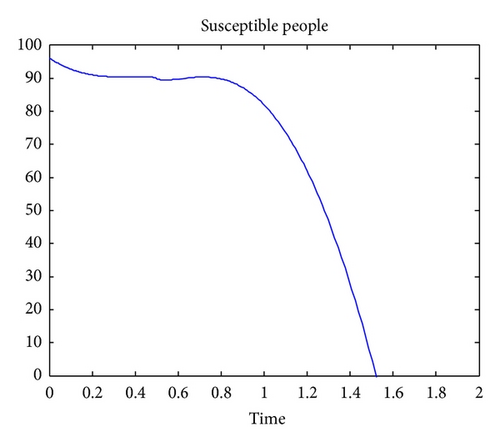
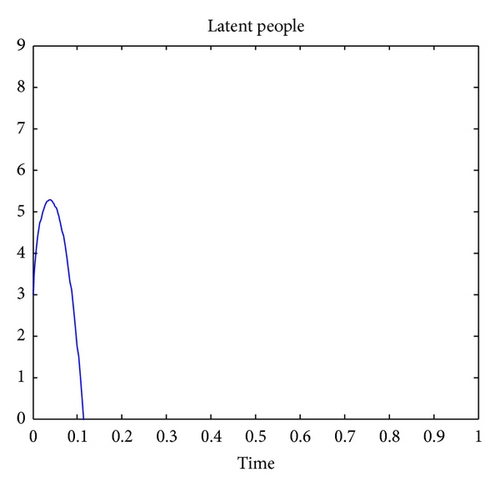
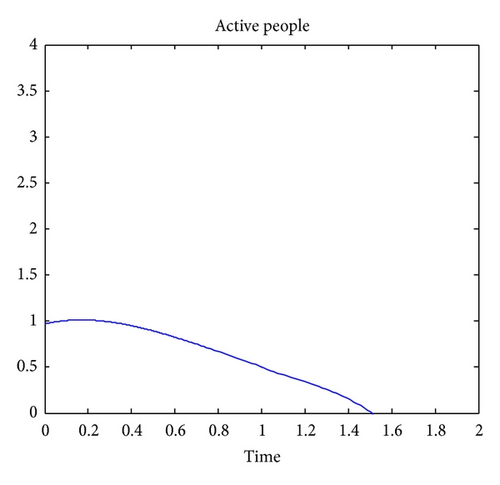
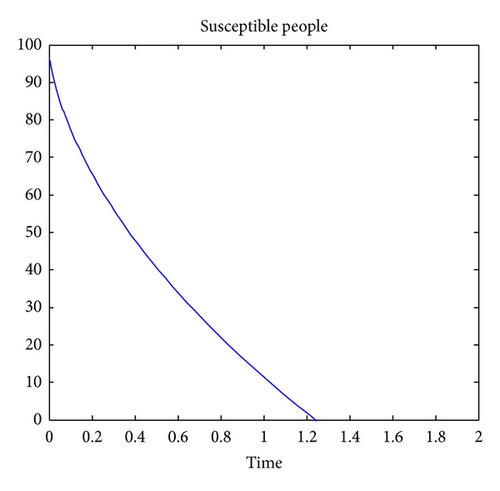
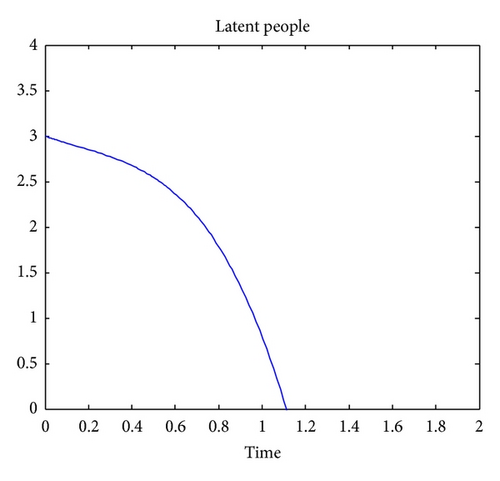
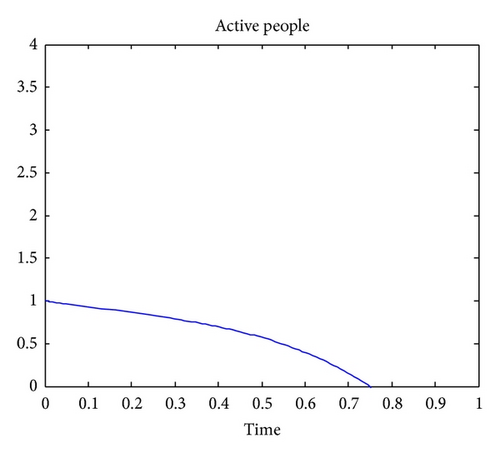
The numerical simulations show that the approximate solutions are continuous functions of the noninteger-order derivative. It is worth noting that the standard mathematical models of integer-order derivatives, including nonlinear models, do not work adequately in many cases. It is therefore advisable to use the fractional model for describing this problem.
5. Conclusion
The tuberculosis model was examined for the case of integer- and noninteger-order derivatives. Both systems of nonlinear equations were solved with an iterative analytical model called the homotopy decomposition model method. The basic characters of the relatively new technique are presented in detail. The approximate solutions of the noninteger case are increasing continuous functions of the fractional order derivative. The technique used for solving these problems is friendly, very easy, and less time consuming. The numerical solutions in both cases display the biological behaviour of the real world situation.




